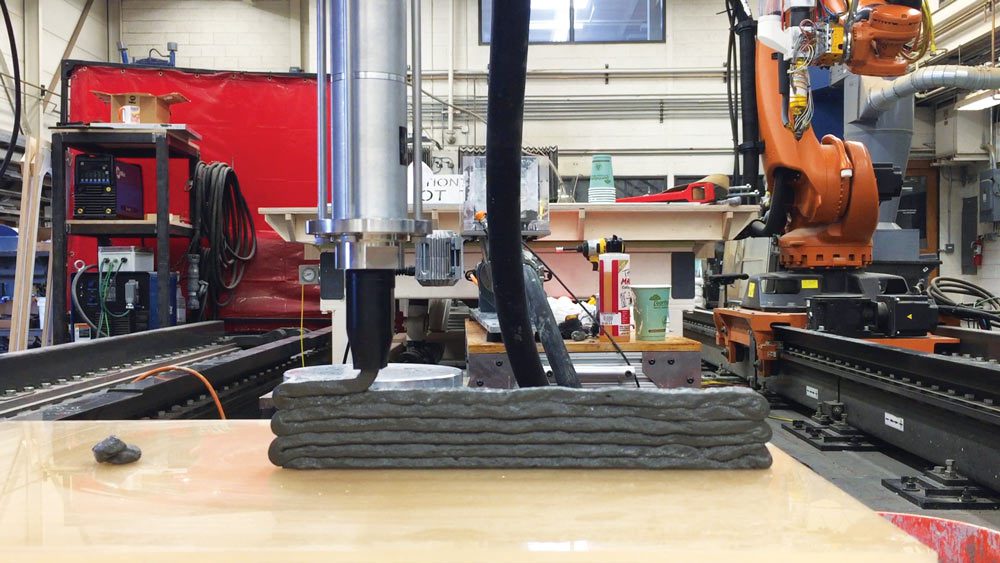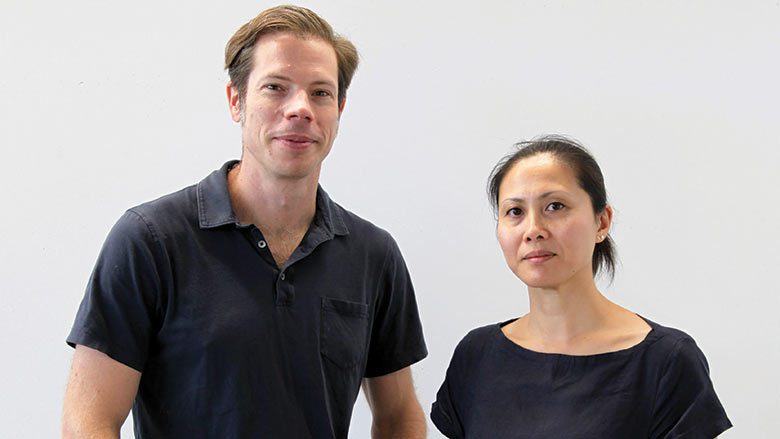Q: What Are You Thinking About?
A: Concrete. We’ve been thinking about and also literally getting our hands dirty with concrete lately. It’s a project that combines a number of shared interests between us, specifically McGee’s expertise in additive manufacturing and Ng’s work exploring new techniques and applications for concrete. Recently, we received two grants, one from the AIA Upjohn Research Initiative and another from Taubman College’s Prototyping Tomorrow program, to explore concrete 3D printing for precast assemblies. There are many people, both from the building industry and from numerous research groups around the world, who are working on deploying 3D printing at construction scales, but it still is nascent in terms of application — and the potential for design is extensive. It’s a big topic with many component parts, all of which are possible moments of innovation. It also is a topic that has a shared interest across disciplines, and we have been fortunate to link up with Dr. Victor Li, a material scientist at U-M’s College of Engineering, to develop specific printing processes with his tailored Engineered Cementitious Composite (ECC) cement. The aim of this collaboration is to push the limits of what concrete can do so that it’s stronger, more resilient, durable, sustainable, and, last but not least, still is aesthetically pleasing.

Q: Why is this interesting to you?
A: Broadly, we are interested in this research not only in how it will impact the future of construction for the building industry, but also in how this technology will spawn new designs that simply were not possible before, given the limitations in concrete fabrication. We both have backgrounds working with concrete and understand the cost and labor involved in building with it. While concrete is one of the most ubiquitously used materials for building around the world, the labor involved for formwork production, setup, and casting is extensive, making it expensive and time consuming. As a new technology for construction, 3D printing has the potential to disrupt existing industry norms for building with concrete. The fact that 3D printing has the potential to reduce or eliminate formwork for casting fundamentally will change how we build with this material. Where it becomes interesting is its potential to change how we design buildings.
Q: What are the practical implications?
A: One of the biggest implications for this technology is its potential to reduce the environmental impact of concrete. The elimination of casting formwork will reduce the waste associated with concrete forming. The increased geometric freedom of the 3D printing process has numerous advantages. We can reduce the total amount of concrete used by as much as 30 percent or more by optimizing structural performance, especially in combination with Dr. Li’s ECC material. By employing computational design techniques, we can develop façade systems that direct airflow or sun shading in novel ways. The printing process also is compatible with emerging techniques like CO2 sequestration, which has the potential to make concrete not only carbon neutral but carbon positive. We also are looking at techniques in which the design of the concrete mix can be varied on the fly, which is not possible with traditional casting techniques. While there still is a lot of work to do before 3D printing of concrete will become widespread, we think it has far-reaching potential for architectural design and construction.
Wes McGee is an assistant professor of architecture and the director of Taubman College’s FABLab. Tsz Yan Ng is an assistant professor of architecture and the principal of an independent architecture and art practice with built works in the United States and China.





